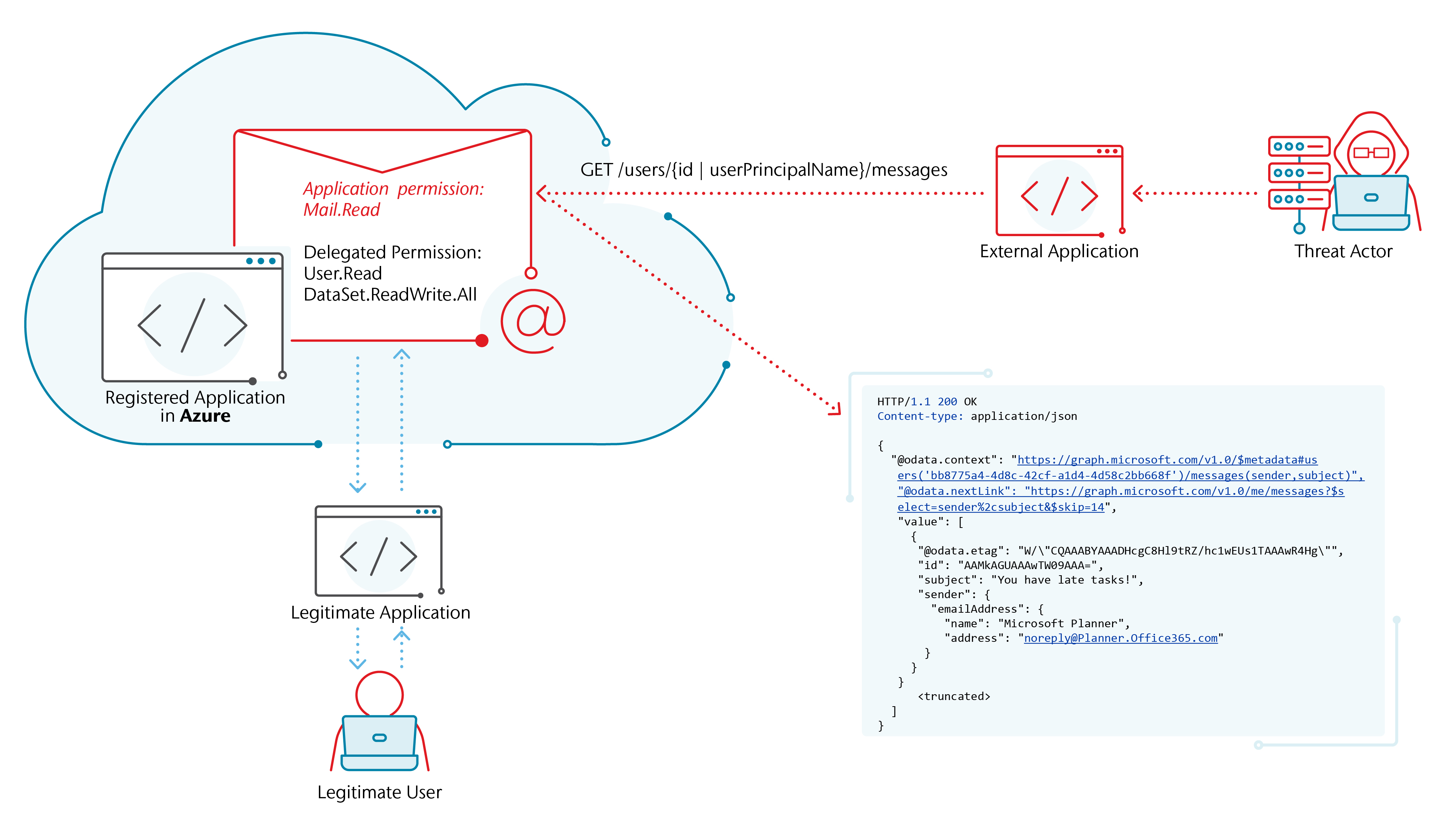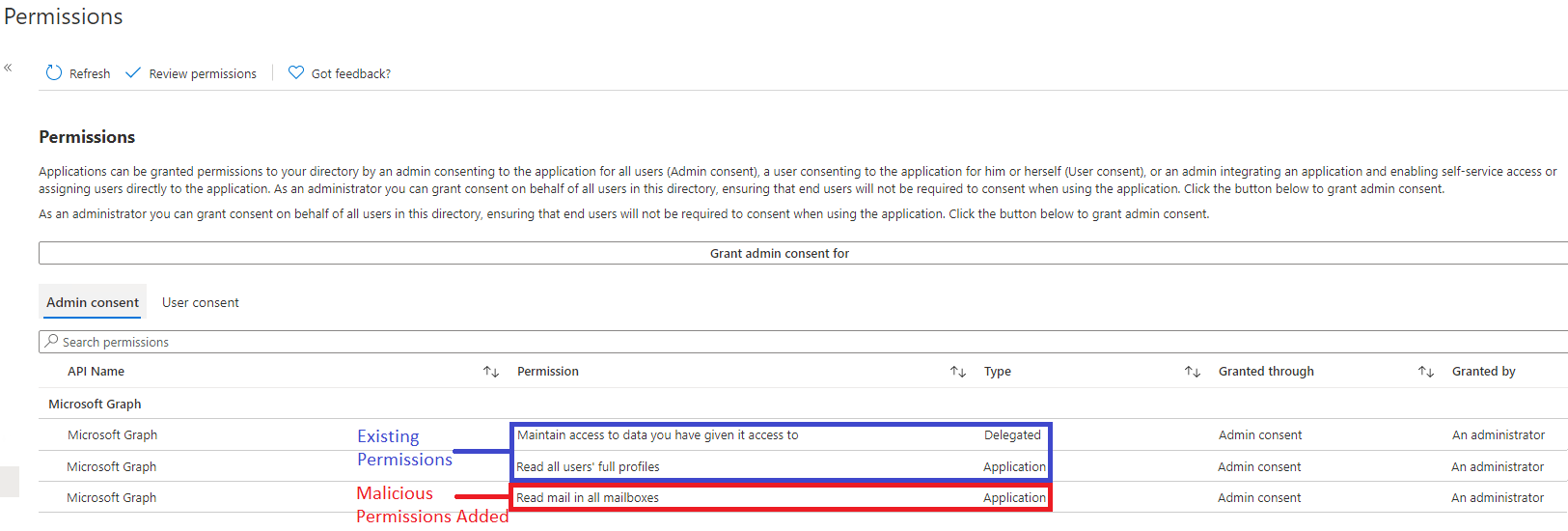How an Advanced Threat Group Leveraged Microsoft Azure to Gain Persistent Access to Emails
Introduction
Over the last few weeks, Stroz Friedberg Incident Response has led multiple investigations related to the nation-state threat group being tracked under several names – UNC2452, Dark Halo, StellarParticle and SolarStorm. Stroz Friedberg has tracked some of the activities tied to this threat group going back to January 2020. It has been widely reported that this threat group used the SUNBURST backdoor to gain initial access to victim networks. However, Stroz Friedberg is investigating incidents where the same threat group gained initial access through alternative means, without any evidence of SUNBURST use.
Based on open-source reporting, a common theme associated with this threat group is its focus on victims’ email data – be it in O365 or on-premise Exchange. On December 13, 2020, Microsoft issued an advisory on this threat group detailing the tactics that enabled persistent long-term access to users’ email in Office 365 (“O365”) – specifically by adding the application-level permissions “Mail.Read” or “Mail.ReadWrite” to cloud applications in Azure.
In this post, we’re going to enumerate (1) the attack chain wherein the threat group gains long-term access to all users’ mailboxes within an O365 tenant and (2) the evidence sources that track such activity.
Attack Chain
A crucial component needed to gain long-term persistent access to read all users’ mailboxes in O365 is access to an administrator account in Azure Active Directory. This is especially easy for a threat group to accomplish when an administrator account is not protected by multi-factor authentication (“MFA”). Even in cases where MFA is implemented, this threat group has taken steps to bypass MFA. In our investigations, the threat group took the following steps:
- Compromise administrator account credentials and/or forge authentication tokens for an administrator account and log into the account.
- Modify existing Azure applications to add “Mail.Read” or “Mail.ReadWrite” application permissions.
- Create a client secret to enable “client credentials grant” authentication to modified Azure applications with the newly added permissions.
- With access to (1) the client ID of the targeted Azure application, (2) the Azure tenant ID and (3) the client secret, connect to victim’s Azure tenant via the registered application to read email from any mailbox in the tenant.

It’s helpful to visualize this and walk through an example scenario. When an application is registered in Azure, a delegated permission “User.Read” is automatically assigned to the application. In Azure, delegated permissions differ from application permissions as described by Microsoft below:
Delegated Permissions: Delegated permissions are used by apps that have a signed-in user present. For these apps, either the user or an administrator consents to the permissions that the app requests. The app is delegated permission to act as the signed-in user when it makes calls to the target resource.
Application Permissions: Application permissions are used by apps that run without a signed-in user present, for example, apps that run as background services or daemons. Only an administrator can consent to application permissions.
In this example, suppose the organization also adds the permission “Dataset.ReadWrite.All” for their purposes. Once a threat group gains access to Azure using an administrator account, they can add an application permission like “Mail.Read” to this existing application in Azure. Adding this permission will not impact the legitimate usage of the application by the organization, and as a result may go undetected. Upon adding the “Mail.Read” permission, the threat group can then create a client secret to authenticate to this application. Armed with the client ID, tenant ID and the client secret, the threat group can now connect to Azure and read all email via an external application. That external application could be a commercial product designed to export mail from O365 or could be a custom application to pull mail via the Microsoft Graph API. Alternatively, the threat group could register a new application of their own to Azure as a method of persistent access. This method is much more likely to be detected, depending on the tenant configurations and diligence of the organization.
As an example, issuing an HTTP GET request like GET /users/{id | userPrincipalName}/messages would result in retrieving all email messages for a specific user. A list of Graph API methods that can be used is documented by Microsoft here.
Using the Microsoft Graph API, a threat group can also issue requests based on certain filters. For example, they can retrieve all emails within a tenant that contain specific keywords such as “PRIVILEGED AND CONFIDENTIAL” in the body of an email.
As a proof of concept, Stroz Friedberg created an external application called “MailFetch” that takes as inputs client ID, tenant ID and the client secret and issues Microsoft Graph API requests through the registered Azure application associated with the client ID. To manage the output and to prevent reading all email within the tenant, the application takes as an input a “username” which is used as a filter. Using MailFetch, you can verify that the “Mail.Read” permission grants read access to all users’ mailboxes. MailFetch is publicly available on our GitHub page.
Organizations impacted by this threat workflow may be interested to know the following data that was accessible through the Graph API permission “Mail.Read” during our testing:
- Message__body__content
- Message__body__contentType
- Message__bodyPreview
- Message__conversationId
- Message__conversationIndex
- Message__flag__flagStatus
- Message__from__emailAddress__address
- Message__from__emailAddress__name
- Message__hasAttachments
- Message__importance
- Message__inferenceClassification
- Message__internetMessageId
- Message__isDraft
- Message__isRead
- Message__isReadReceiptRequested
- Message__parentFolderId
- Message__receivedDateTime
- Message__replyTo__emailAddress__address
- Message__replyTo__emailAddress__name
- Message__sender__emailAddress__address
- Message__sender__emailAddress__name
- Message__sentDateTime
- Message__subject
- Message__toRecipients__emailAddress__address
- Message__toRecipients__emailAddress__name
- Message__webLink
- Message__changeKey
- Message__createdDateTime
- Message__lastModifiedDateTime
- Message__id
- Message__isDeliveryReceiptRequested
- Attachments__contentBytes
- Attachments__contentType
- Attachments__isInline
- Attachments__lastModifiedDateTime
- Attachments__name
- Attachments__size
- Attachments__id
- Attachments__contentId
- Attachments__contentLocation
As we see from the email properties exposed above, a threat group using an Azure application with the “Mail.Read” application permission has access to the body of the email, email senders/recipients and attachments in addition to other email properties.
As mentioned in the example scenario, the threat group is also able to filter on email properties to retrieve only emails of interest. Per Microsoft’s documentation, filters can be applied to the following properties:
- attachment
- bcc
- body
- cc
- from
- hasAttachment
- importance
- kind
- participants
- received
- recipients
- sent
- size
- subject
- to
Examples on how these HTTP requests can be crafted can be found here.
Detection Mechanisms
On December 16, 2020, Microsoft released Azure Sentinel queries that detect the Techniques, Tactics and Procedures (“TTPs”) mentioned in this post, including but not limited to: (1) the creation of service principals; and (2) addition of permissions to applications. Leveraging these, Stroz Friedberg recommends organizations review the following areas to detect the attack chain detailed above.
Sign-in Activity
When investigating sign-in activity for this attack chain, focus on sign-ins to Office 365 and Azure Service Principals.
As with any investigation into malicious activity in Office 365, look out for user sign-ins that originate from anomalous IP addresses, especially those from anonymization services. Administrator accounts are of particular interest since these are the accounts that can modify cloud applications in Azure. Gaining access to an administrator account is the first step in this attack chain.
In addition to common methods such as phishing or credential stuffing, one potential avenue for O365 account compromise that this threat group has been known to use is SAML token forgery. If the threat group has stolen the SAML-signing certificate from the organization’s network, or added their own certificate to the tenant, they can sign their own tokens to impersonate any user in the tenant, including administrator accounts. A January 2021 CISA alert addressing ways to detect malicious activity in Azure notes a specific “UserAuthenticationValue” of 16457, which is described as an indicator of potential SAML forgery. Looking for non-guest users whose sign-in events in the Unified Audit Log contain this value could identify sign-ins that have used forged SAML tokens.
Additionally, Service Principal sign-ins should be reviewed for unauthorized activity. These events can be found in the Azure Active Directory portal under Sign-Ins. Within Azure Sentinel, this data is tracked in a table named “AADServicePrincipalSigninLogs”, which displays the source IP address that the sign-in attempt originated from. As with Office 365 user logins, anomalous IP addresses could be indicative of compromise.
Please note that AADServicePrincipalSigninLogs is only enabled in Azure Sentinel when diagnostic logging is enabled on the workspace. Microsoft has listed the steps to enable diagnostic logging here.
Modifications to Azure Applications
A core component of these types of attacks involves modifying existing applications with additional permissions. There are two ways to detect this, (1) via the Unified Audit Log which shows historical activity (retention will vary depending on the environment), and (2) the active application-level permissions within Azure.
Unified Audit Log
Organizations should review operations in the Unified Audit Log that relate to application creations, changes, and deletions. Any of the following Unified Audit Log events could indicate changes to an Azure application:
- Update application.
- Consent to application.
- Add OAuth2PermissionGrant.
- Add app role assignment to service principal.
- Add app role assignment grant to user.
- Add service principal.
- Update service principal.
- Update application.
- Update application – Certificates and secrets management
Although each operation is formatted slightly differently, you will most often find the Application/Service Principal name in the AdditionalDetails portion of the log; specifically, under the targetname attribute.
A User Agent attribute can also be found in the AdditionalDetails section of the log entry which can also be used as a potential indicator of compromise, the exact attribute name is “User-Agent”.
Audit of active application-level permissions in registered Azure Apps
In addition to a review of the Unified Audit Log, Stroz Friedberg also recommends an audit of active application-level permissions assigned to registered Azure applications to ensure there is no active compromise.
Apart from email access via an Azure application with “Mail.Read” or “Mail.ReadWrite” permissions, threat actors could plausibly add other application-level permissions such as “Sites.Read.All” or “Files.Read.All” which would grant read access to documents stored on all SharePoint/OneDrive sites in the organization.
To review these application permissions within Azure, one can perform the following steps:
- Go to the Azure Portal (https://portal.azure.com)
- Search for Enterprise Applications, and navigate to the page
- Select the application to review
- On the left-hand side, select Permissions
- Look for permissions that are potentially overinclusive such as Mail.Read permissions. If the Type is labeled as “Application” this indicates that there is potential for global read abilities.
See below for an example of an application with malicious “Mail.Read” permissions added:

If you have more than a couple of applications in Azure, Stroz Friedberg recommends using Sparrow, a tool created by Cybersecurity & Infrastructure Security Agency (“CISA”), to perform this audit across all applications in your Azure tenant. Upon successful execution, this tool creates a report called “ApplicationGraphPermissions.csv” that contains all the application-level permissions assigned to applications in Azure.
A list of all application-level graph permissions can be found in Microsoft’s documentation here. If a compromised application contains unexpected permissions that could access Mail, Sites or Files, Stroz Friedberg recommends reviewing the Unified Audit Log for associated activities. Below is advice on identifying access to mail by a compromised application.
Emails Accessed through Compromised Application
In some cases, organizations can determine the exact emails that were accessed via the compromised Azure application. To perform this analysis, organizations must already have premium Office 365 E5 subscriptions. Only users that were already assigned the Office 365 E5 license will be eligible for this investigation. Enabling E5 licenses at the start of the O365/Azure investigation will not provide historical data.
To start this workflow, organizations will need to get the Application ID of the application(s) deemed compromised.
To find the Application ID:
- Go to the Azure Portal (https://portal.azure.com)
- Search for Enterprise Applications, and navigate to the page
- Select the application you have deemed as compromised
- Select Properties on the left-hand side of the screen
- Note and save the Application ID; this will be needed later.
See below for an example of the Application Properties page and location of Application ID:

With the Application ID documented, use the ID to determine all emails accessed by the application.
Unified Audit Log / Mailbox Audit Log Analysis
Within the Unified Audit Log and Mailbox Audit Logs, analyze the “MailItemsAccessed” operation. Both the Unified Audit Log and Mailbox Audit Logs contain this operation, and the client ID can be found in the “ClientAppID” field.
See below for a sample of attributes found in one MailItemsAccessed Unified Audit Log entry (values shown below are randomized or generic). Stroz Friedberg identified the user agent “Client=REST;Client=RESTSystem;;” utilized across multiple cases, however it is possible the threat actor could utilize a different user agent in other environments.
Highlighted in red is the compromised client application ID. Highlighted in blue are the Internet Message IDs of emails accessed – multiple messages may be aggregated into one MailItemsAccessed event. These Internet Message IDs can then be correlated to metadata within acquired mailboxes to extract the exact emails accessed.
| Attribute Name | Value |
| CreationTime | 2021-01-01T12:00:00 |
| Id | a123bcde-1a2b-3c4c-1234-abcde12f34g5 |
| Operation | MailItemsAccessed |
| OrganizationId | abcdef-7247-92fj-b184-24789fde193e |
| RecordType | 50,”ResultStatus” Succeeded |
| UserKey | 123456789A12345 |
| UserType | 0,”Version” 1,”Workload” Exchange |
| UserType.Version | 1 |
| UserType.Workload | Exchange |
| UserId | jane.doe@YourDomain.com |
| ClientAppId | 8db2c6d7-1abc-123a-a123-ab12cd34567e |
| ClientIPAddress | 168.63.129.16 |
| ClientInfoString | Client=REST;Client=RESTSystem;; |
| ExternalAccess | FALSE |
| ExternalAccess.InternalLogonType | 0 |
| ExternalAccess.LogonUserSid | S-1-2-34-1234567891-234567890-123456789-12345678 |
| MailboxGuid | a12345bc-67d8-1234-56ef-1234g567h890 |
| MailboxOwnerSid | S-1-2-34-1234567891-234567890-123456789-12345678 |
| MailboxOwnerUPN | jane.doe@YourDomain.com |
| OperationProperties.MailAccessType | Bind |
| OperationProperties.IsThrottled | FALSE |
| OrganizationName | YourDomain.com |
| OriginatingServer | AB1CD2345EF3456 (12.34.5678.901)u111bu222c |
| SessionId | 12a34567-1234-123b-a12b-a123bcd45e6f |
| Folders.FolderItems.InternetMessageId | <12345678a1b2345c1a12345ab1a12ab@EXCH01.YourDomain.com> |
| Folders.FolderItems.InternetMessageId | <43215678a1b2345c1a12345ab1a12ab@EXCH01.YourDomain.com> |
| Folders.FolderItems.InternetMessageId | <34565678a1b2345c1a12345ab1a12ab@EXCH01.YourDomain.com> |
| Folders.FolderItems.InternetMessageId | <22345678a1b2345c1a12345ab1a12ab@EXCH01.YourDomain.com> |
| Folders.FolderItems.Id | LgAAAAB1aABCDefABCDEFgHIj1aABCD+AbBcdEFGHiJ1aB1CDEFGHIJKLM1ABCD |
| Folders.Path | Inbox |
| Folders.OperationCount | 4 |
| ResultIndex | 1 |
| ResultCount | 4500 |
| Identity | a123bcde-1a2c-3d4e-1234-a1ab123a45b6 |
| IsValid | TRUE |
| ObjectState | Unchanged |
Sample MailitemsAccessed
MailItemsAccessed logging does have some limitations; for instance, if an account has over 1,000 items accessed in a single day, MailItemsAccessed logging will pause for the next 24 hours. Additionally, users with lower levels of licensing will not have this logging available, limiting visibility into this activity for non-E5 users. Additional information related to MailItemsAccessed analysis can be found in Microsoft’s documentation here.
Authors: Partha Alwar, Carly Battaile, Alex Parsons
Special Thanks: Zack Weger, Daniel Spicer, Sankara Shanmugam, Mahmoud El Halabi, Noah Rubin


